On August 1, 1963, the US Post Office experimented with luminescent stamps for the first time, in an effort to speed up mail sorting and cancellation.
By the late 1950s, mail volume in the US and around the world was constantly increasing. Many countries began to explore new ways to sort and postmark their stamps in quicker and more efficient ways.
Working with private sector companies such as Pitney Bowes, the US Post Office worked to develop machinery that could find the stamp and flip the envelope (a process known as “facing”) so the postmark would be placed in the right spot. In order to do this, the stamps needed to be able to be “seen” by the machine.
Soon planners discovered their answer – luminescence. This is a process in which stamps received an invisible coating that could only be seen under ultraviolet (UV) light. Under this light, the stamps would glow.
The Post Office then needed to test their new idea, and selected US #C64 as the first stamp to implement this experiment. The stamp was issued on August 1, 1963, in Dayton, Ohio. The Post Office sent their special machinery there and overprinted the stamps with a special compound called a “taggant.” Invisible to the naked eye, the taggant made the stamps glow pinkish orange under the UV light. The experiment was a success – the machine acknowledged the glow, flipped the letters, and applied the cancels in quick order.
The Post Office conducted more tests and eventually adopted this “tagging” on a larger scale. After mid-1964, all airmail stamps were tagged. And after 1991, all definitive and commemorative US stamps were tagged, except pre-cancels and those under 8¢ face value. Tagged low-value stamps can trigger the facer-canceler, which can’t read face value and reject mail if postage is insufficient.
Older tagged stamps will have a reddish glow, while more modern ones will have a greenish glow. And in recent years, the USPS has gotten creative with its tagging, making certain elements of a stamp glow, rather than the entire stamp.
Did you know…
that a stamp missing its phosphorescent tagging is considered by many to be similar to a missing color error? Mystic has a large selection of these neat “tagging omitted” stamps you can browse and order here. Many are affordably priced under $10, and all are half their Scott Catalogue values!
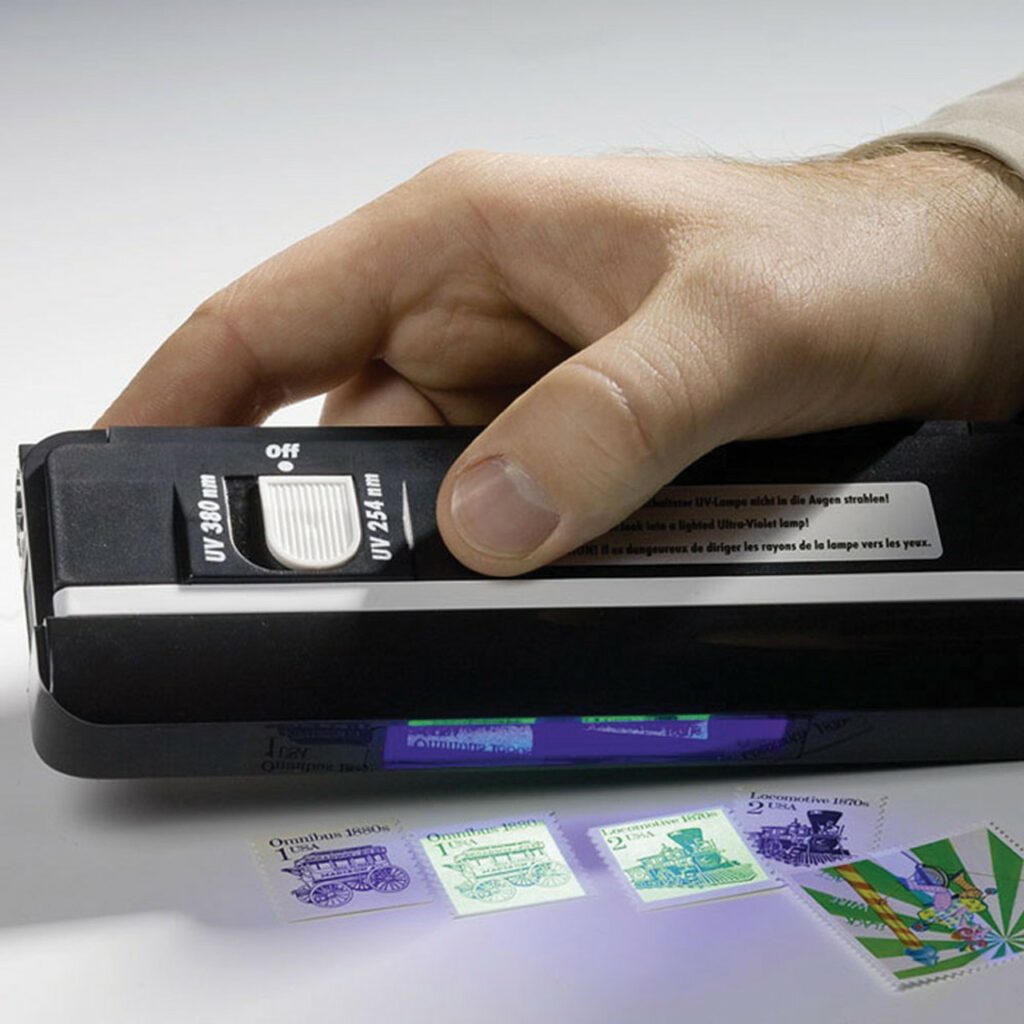
| FREE printable This Day in History album pages Download a PDF of today’s article. Get a binder or other supplies to create your This Day in History album. |
Discover what else happened on This Day in History.

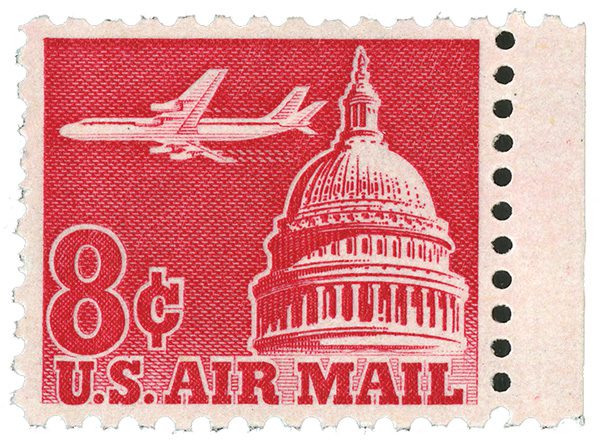
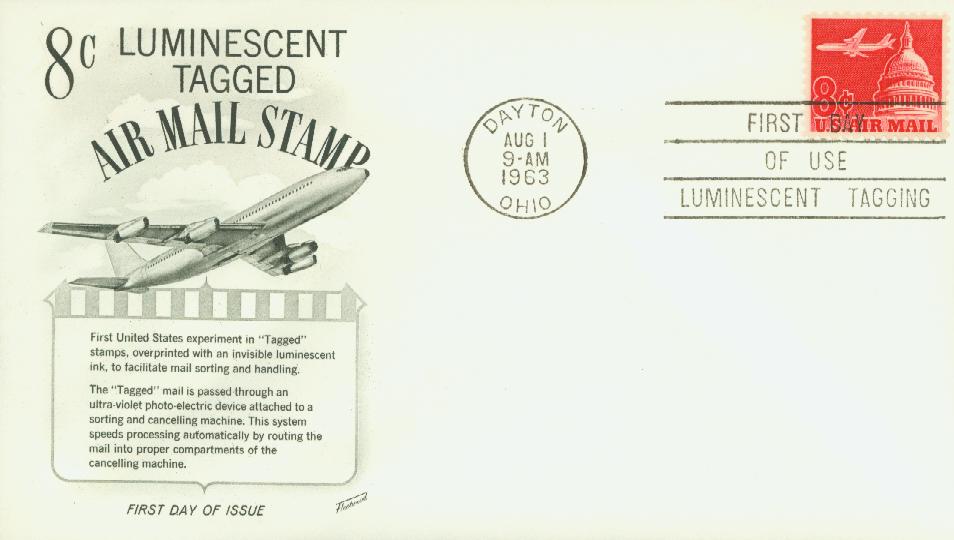
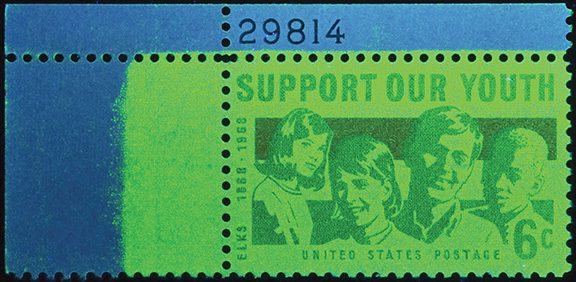
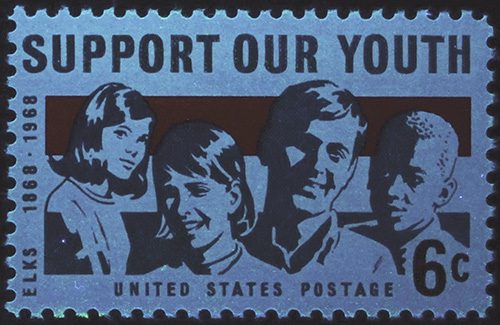
I knew nothing of this project or the extent to which, for many decades, postage stamps were treated this way! Is this technology still being used by current mail sorting devices?
This is an excellent article – thanks for providing the detailed information.
Interesting question about still using this method. Digital imaging today is certainly up to the task of dealing with the volume, and would not require that each and every stamp be ‘tagged’. But you have to consider the simplicity of tagging.
Digital imaging would need to be programmed in some way to recognize the orientation of a piece of mail. With the variety of stamp shapes and sizes, does that factor into the imaging?
With tagging, it’s there or it isn’t. Very simple binary decision. Either yes, or no. No need to interpret for shape, size, color, etc.
Over last couple of years, getting back into dealing with my stamp collection started as a kid. Tagging was a recent topic I was starting to look into. Great timing for this article. Now to just figure out all the Washington and Franklin versions!!!
I didn’t know that this was done. I found the article to be fascinating.
I use the UV lamp you can get at the pet store for checking for pet urine. I had the lamp and tested it on some stamps and it works fine!
elf serving article. I like straight history better–and more complete histories better than these compact abbreviated style now being used.
I did not know about this either. I learn so much from these articles.
You need a prof reader – – countries is spelled with an “R”, yours is omitted
Are all modern stamps are tagged
Are the stamps today tagged?
Very nice, imformative article on a subject I only knew the basics. Keep the articles coming – I really enjoy them even when I as well imformed. The articles, at the very least, confirm what I already know!
Great article as i didn’t know this. I enjoy all of your daily stories of stamps.
I found a old Native stamp book with top notch old but in good shape Benjamin franklin blue and the green and George Washington red and some more.